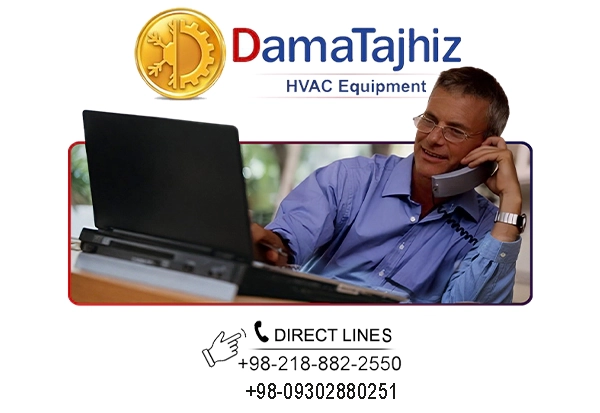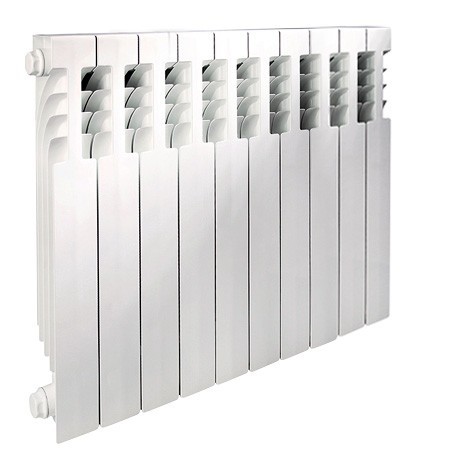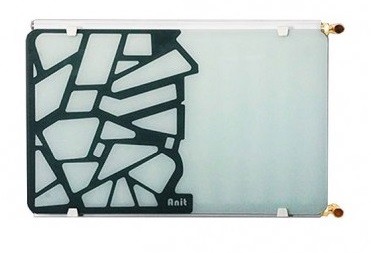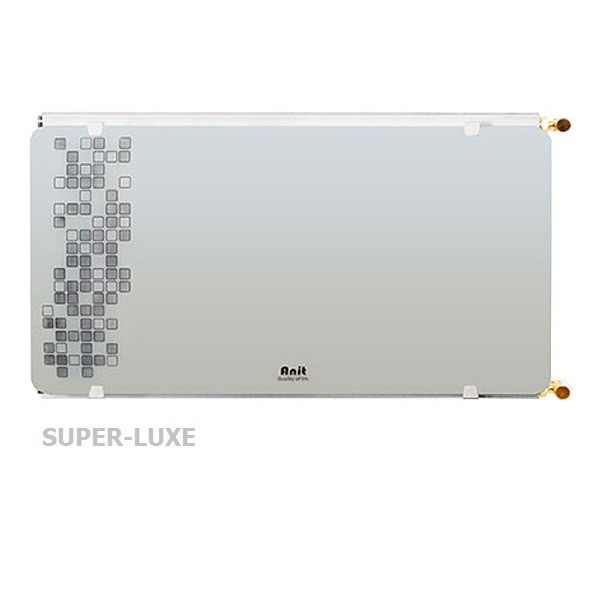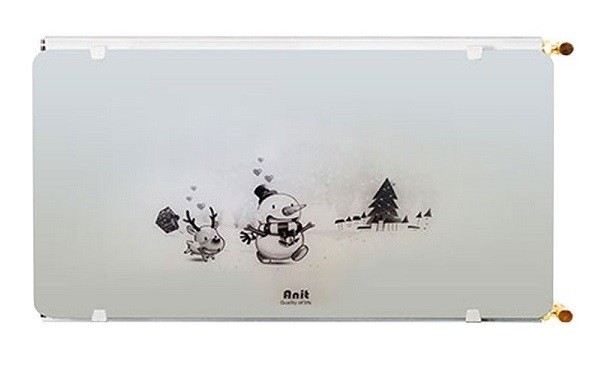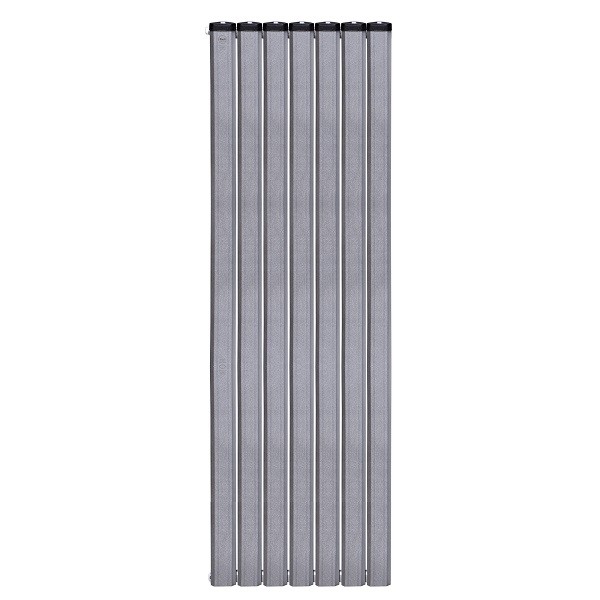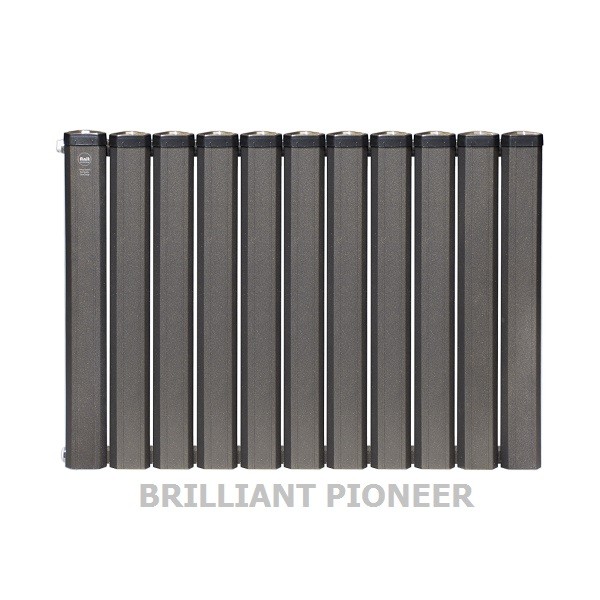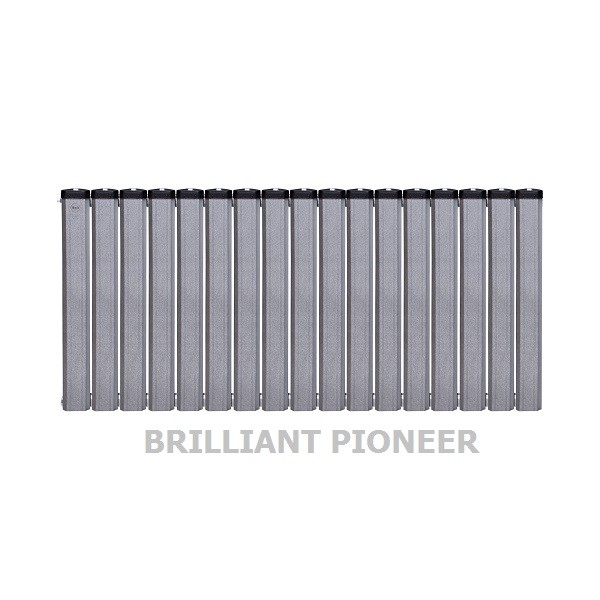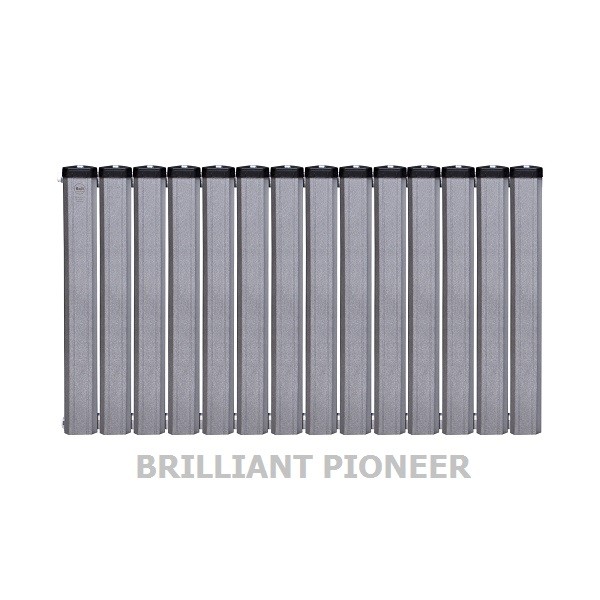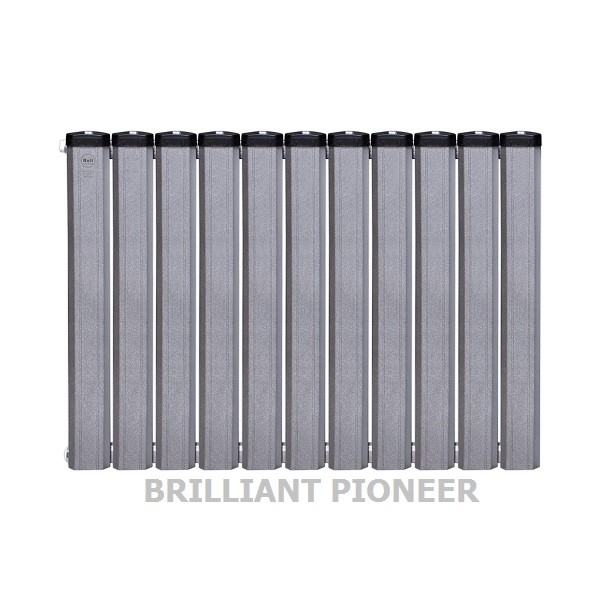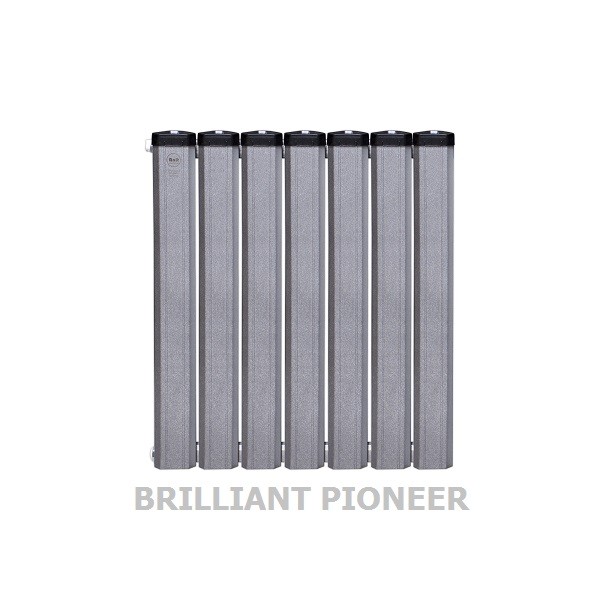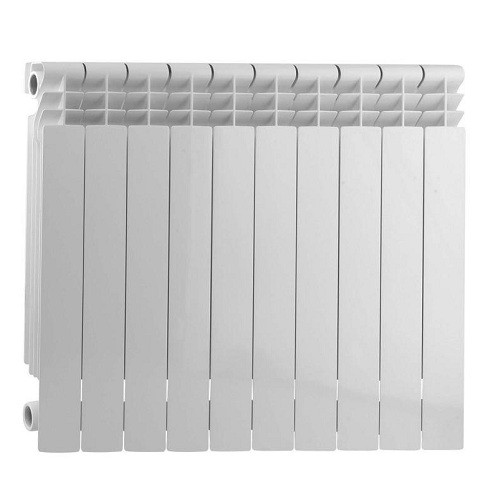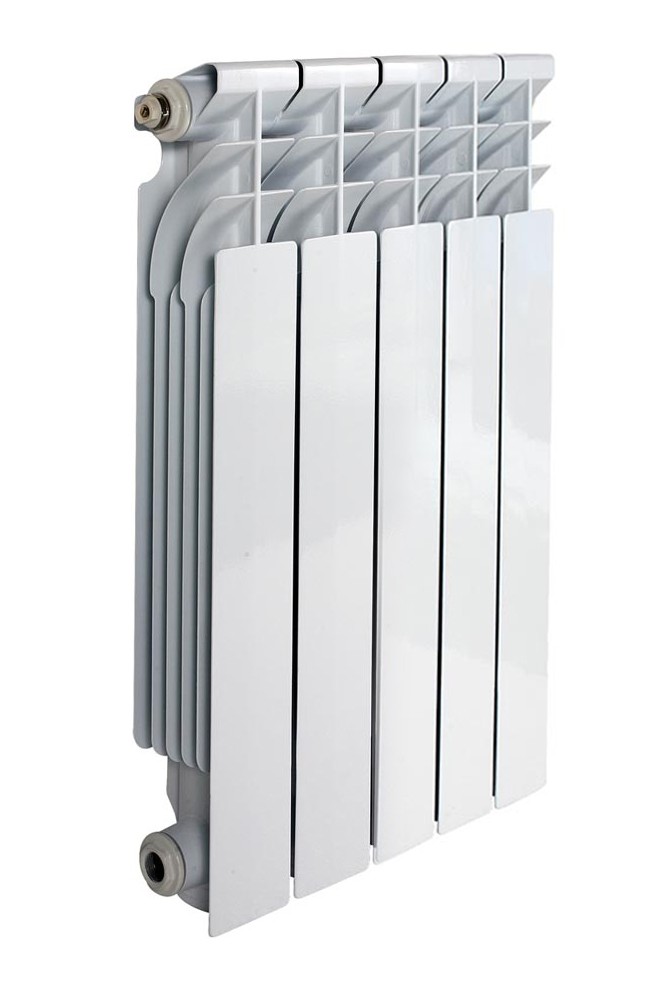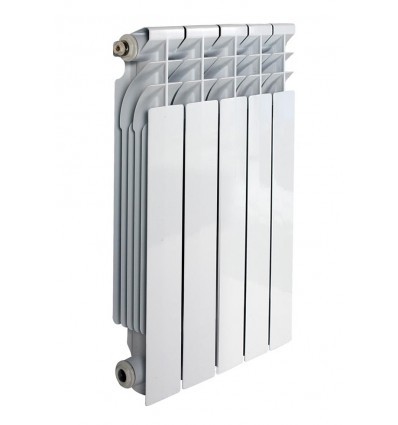Aluminum Radiator
An aluminum radiator is one of the most common types of heating equipment utilized by many people due to the ubiquity of the central heating system (engine room) in buildings. Estimating the number of fins, which is actually the amount of heat they produce, requires information such as the capacity, heat loss rate, price, etc. So stay with us to learn more about them for wholesale purchase.
Aluminum Radiator Expert Buying Guide and Price List
One of the most common heating equipment for apartments and houses is the use of aluminum radiators. The water of the central heating system (Engine room) is efficiently heated using burners and boilers. Then, this hot water is directed to different parts of the building through pipes and enters the radiators of each part.
The hot water flows in a cycle, so when the heat decreases due to the exchange of heat with the environment, the water returns to the boiler or the combi boiler, then reheats, and the cycle continues.
Radiators are mostly used where there is no need for precise temperature and humidity control. Because radiators can distribute heat and cannot accurately adjust the temperature and humidity of the environment, radiators also reduce the relative humidity and dry the air in the environment.
However, with a thermostatic valve, you can adjust the ambient temperature completely to provide a comfortable temperature as well as save fuel and energy.
Review, Selection, and Pricing of HVAC Equipment
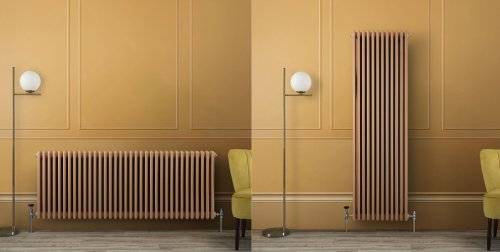
Finned Aluminum Radiators
In a finned radiator, just like other types of radiators, hot water enters the device and heats the room. What makes finned radiators so special is that if one of the fins is damaged, there is no need to replace the entire fin, and you can only replace the defective one.
Advantages of an Aluminum Radiator
Despite the fact that aluminum radiators have numerous advantages over other types of radiators, here are some of the most important ones:
- Aluminum radiators are relatively lightweight.
- Aluminum radiators do not rust for long periods, even in humid environments such as bathrooms.
- Aluminum radiators have a long lifespan and are resistant to cracking or bending.
- Aluminum radiators are highly eco-friendly due to the recyclability of aluminum, a metal known for its sustainability.
- It is possible to reduce or increase the number of fins. Consequently, it is possible to increase the heating power (only in full-die-cast and extruded die-cast radiators).
- The ability to replace the damaged fin in the Iran Radiator and Bhutan radiator can be a bit costly.
- Aluminum radiators have higher heat transfer efficiency compared to steel radiators.
In general, the aluminum radiator is lighter, more beautiful, and has a higher thermal conductivity coefficient than steel radiators, but it is also more expensive.
Types of Aluminum Radiators
Aluminum radiators are divided into three categories according to the production method:
- Full Die-Cast aluminum radiators
- Extruded aluminum radiators
- Extruded Die-Cast aluminum radiators
DamaTajhiz: Thousands of products for thousands of projects (since 2004)
Get to know aluminum radiator better
In die-cast radiators, the fins are made from A413 aluminum and have a certain heating power, and the number of required fins must be determined based on the required thermal load. These fins possess a specific level of heating power, determined by the difference between the temperature of the hot water entering the radiator and the air temperature of the area where the radiator is installed.
The thermal load must be estimated and calculated to determine the number of fins needed to generate the desired heat for a given space.
Aluminum radiators have more heat exchange surfaces and conductivity with the air than panel radiators due to having a higher exchange level. Under normal conditions and with a temperature difference of 60°C, each square meter makes about 670 kcal/h.
How to Calculate the Approximate Number of Aluminum Radiator Fins
In order to calculate the number of aluminum radiator fins required for each space of your building while announcing its dimensions and location, consult the installation engineers or experts of DamaTajhiz HVAC.
Of course, for weather conditions such as Tehran, Mashhad, Isfahan, Shiraz, Kermanshah, Rasht, Semnan, Kirkuk, Mosul, Erbil, Aleppo, Damascus, Kabul, etc., provided that there is no excessive penetration of cold air into The existence of only one wall exposed to the cold outside air, in the middle floors of the building, approximately, can be approximately 85 kilocalories for each square meter of the useful building.
For the upper floor of the parking lot, for each square meter of the useful building, about 95 kilocalories, and also for The units that are located under the roof of the building should be considered about 120 kilocalories. (For each additional wall that is in contact with the cold outside air, 20% is added to the above heating values.)
Now, you can calculate the amount of heating needed for each space of your building by multiplying the useful space in question by the heating kilocalories required for that space. In the end, by dividing the required heating number of each of the spaces by the heat produced by each blade of your selected aluminum radiator, get the required number of radiator blades (The heat produced by each blade is specified in the technical specifications table of that model).
All die-cast aluminum radiators are the best type and production method of radiators, and each blade of the radiator is produced in an integrated mold under die-cast pressure. After testing, finishing, and painting, each radiator blade is connected with 2 liners, placed in the factory packaging, and supplied as blocks of 5 blades, 7 blades, and 10 blades (To use a radiator block with a different number of fins, the fins must be added at the installation site).
Except for extruded or profiled radiators such as Alfam or Crystal radiators, whose fins are fixed and cannot be increased or decreased, in the case of other types of die-cast aluminum radiators, the number of fin blocks can be changed on-site.
For example, to prepare a 15-blade radiator block, a 5-blade radiator, and a 10-blade radiator are inevitably connected by the installer at the building site, or for 20-blade radiators, two 10-blade blocks are connected at the installation site.
In extruded die-cast radiators, the production method is a combination of both of the above methods. In this way, the upper and lower parts of each aluminum radiator blade are produced by the die-cast method, and the middle part of each blade is also produced by the extrusion method. Then, the upper, middle, and lower parts are connected.
DamaTajhiz; Guide to Selection and Pricing of HVAC and Building Facilities Equipment (Since 2004)
Heating Capacity Calculating Formula of Aluminum Radiator
The following formula will help you to determine the required heating capacity of an aluminum heater:
QT=[(U1*A1+U2*A2+U3*A3+…)∗ΔT+(V*0.0749*0.24* ΔT)]*4
- QT heating load of each unit in kilocalories per hour
- U1 to Un heat transfer coefficient of each surface between the inside and outside of the building in terms of BTU/ft2.hr. °F, which should be determined based on the material of each wall, using engineering reference tables.
- A is the area of each of the peripheral surfaces of the corresponding unit that transfers heat to the outside of the building. This area (in square feet) includes walls, windows, doors, and ceilings.
- ΔT is the temperature difference between the inside and outside of each unit under normal conditions, which is in °F.
- V Total amount of air infiltrating through door or window seams (CFH) in ft3/hr.
- Constant factor 0.0749: air density in conventional conditions in the English unit system
- Constant coefficient of 0.24 specific heat capacity of ambient air in conventional conditions in English units
In the above formula, by calculating the values of all the parameters, you can get accurate results to determine the number of aluminum radiator fins needed for each room.
Note: The exact values of U and area A for each of the surrounding surfaces must be considered based on specific details in each building and engineering tables of the heat transfer coefficient.
Review, Selection, and Pricing of HVAC Equipment
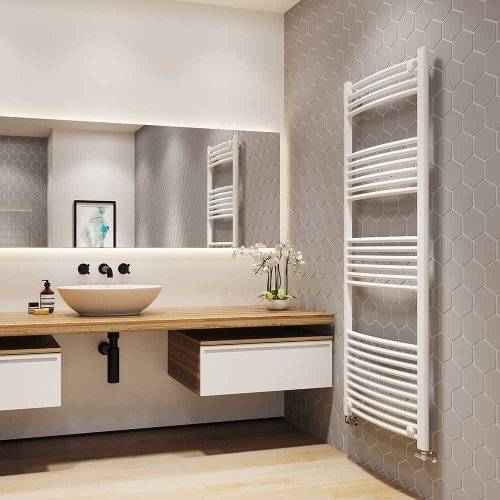
Buying an Aluminum Radiator
Radiators operate better in spaces where the distance between the floor and ceiling is no more than 3 meters. Hot air accumulates under higher ceilings, making radiators less effective in those areas. For spaces with higher ceiling height, it is recommended to use other heating equipment such as fan coil units, heaters, split ACs, ducted ACs, etc.
In order to buy the right device, you must determine the required heating capacity of the radiator before anything else. On the website of DamaTajhiz HVAC, technical information about dozens of aluminum radiators from reputed brands, along with their eligible guarantee, has been provided for you to experience optimization and smart shopping.
Also note that in the specialized HVAC group of Damatajhiz, all the aluminum radiators are only sold in bulk. Therefore, if you want to wholesale these products, contact us.
DamaTajhiz; The Best Prices and Brands of Ventilation, Heating, and Building Facilities Equipment (Since 2004)
The price of Aluminum Radiators
The price of an aluminum radiator is determined by some factors, such as the number of fins, size, and the manufacturer's brand. At DamaTajhiz HVAC, we offer a wide range of aluminum radiators at a great price.
Feel free to browse them as all prices are up-to-date with a generous discount already considered, and the best price for all aluminum radiators and unit heaters is guaranteed for wholesale purchase.
Aluminum Radiator Installation Location
If the device seems to be working, but the room temperature does not rise, it is because the heat is escaping through the walls or the penetration of cold air, so there are heat losses in your buildings, whether we like it or not. One efficient way to prevent heat loss is to use double-glazed UPVC windows as well as a thermostatic valve.
Aluminum radiators are recommended for high-humidity environments, making them perfect for bathrooms. They are also an excellent choice for cities with humid climates, including Rasht, Nowshahr, Sari, Gorgan, Baku, etc.
Heating radiators can be installed either on the wall or under the window of a room. But you should keep in mind that there should be a 10 to 12-centimeter gap between the device and the floor.
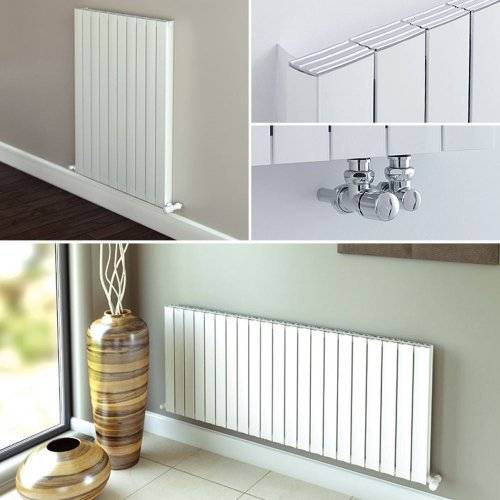
Things to Keep in Mind Before Buying an Aluminum Radiator
By reading the following points, you will be able to find not only a great device but one that will serve you for years to come.
Dimension of the Installation Site
By considering the dimensions of the installation site and calculating the heat loss of the intended space, you can determine the appropriate number of radiator fins. This selection is based on each radiator model's shape, dimensions, and heating capacity.
As usual, we emphasize the accurate calculation of building thermal loads by software and the verification of calculation results by a facility engineer; you can effectively reduce costs related to purchasing, implementing, and operating your system.
The Pipings
The distance of hot water pipes that come out of the wall behind the radiator must be at least 50 cm, but before choosing the radiator model, it is better to check the distance of these pipes again. Also, the distance between the top and bottom pipes for your radiator must be 35 to 60 cm.
It is necessary to install radiators in the vicinity of the peripheral and cold walls of the building (under the windows and near the external walls of the building) so that they can better deal with the infiltration of cold air entering the room.
The Working Pressure
Considering that the working pressure of aluminum radiators and towel dryers is between 5 and 6 bars, installing and using these radiators is permitted for buildings with a maximum of 14 floors.
Due to the high fuel costs, using thermostatic valves instead of standard ones is considered a completely smart and economical choice. Thermostatic valves greatly reduce the cost of your gas bills and have a noticeable effect on increasing the life of the engine room devices.
The Bleeding Valve
The automatic bleeding valve makes it easier to vent the radiators at the beginning of the cold season, and it also reduces the risk of water leakage.
Regular and timely bleeding is one of the most important things in heating equipment maintenance principles. Please note that the rapid bleeding of a radiator should be done carefully every year at the beginning of the cold season when you have turned off the water circulation pump.
When selecting an aluminum radiator, go for a model that can add or remove fins in order to hear or reduce the amount of heat in case of need, as well as a suitable seal and shape.
Moreover, the wider the radiator fin, the more elegant the device is. Typically, finned aluminum radiators come in 6 cm and 8 cm widths. For large spaces, it is preferable to use aluminum fins with a width of 8 cm to look even better.
The Distance between the Device and the Wall
Remember that the minimum distance must be at least 5 centimeters from the wall and 10 from the floor, or it will cause a sharp reduction in the airflow and heating efficiency of the device.
When choosing the number and size of the fins, be sure to pay enough attention to the overall dimensions of the radiator block (in terms of height and length) so that it does not interfere with the window above the radiator or the electrical outlets on the wall during installation.
The space around the radiators should be open for better air circulation and to increase the efficiency and thermal power of the radiator. Therefore, try to remove all kinds of coverings and obstacles (such as curtains, furniture, etc.) in front of the device.
The Cylinder Cap
The essential connections for the installation of each aluminum radiator include a left or right cylinder cap (4 pieces), a normal or thermostatic valve, a water return valve, a bleeding valve, and a bracket to the wall (1 extra bracket for every 10 radiator fins that is added).
Towel dryer radiators are an excellent method to dry towels and wet clothing while lowering humidity and improving hygiene in bathrooms and toilets. They can also elevate the appearance of your bathroom and toilet walls by using a decorative radiator.
Dear Users:
Thank you also for your confidence in the technical opinions of the sales experts at DamaTajhiz HVAC Inc. It should be noted that the buyer ultimately determines the choice of the desired product brand based on history, brand strength, service, and product price. However, in the case of aluminum radiators, most users and buyers choose and purchase best-selling brands such as Iran Radiator, Butan, and Iran Garm based on their quality, price, and after-sales service.
If, after reading the above material, you have more questions about deciding on the purchase of aluminum radiators, you can contact DamaTajhiz HVAC Inc. and internal numbers 107 - 108 - 121 - 122, get advice from the sales experts of Heating Equipment and Machine Room Department and ask your questions In the online purchase of aluminum radiator group products from DamaTajhiz HVAC Inc.
They can deliver within 6 working hours in Tehran (and 2 working days for cities).
"Knowledge Fuels Better Choices"
Registered Trademark and Stewardship Business Licenses Issued by the Union of Virtual Business Association and the HVAC Equipment Industry.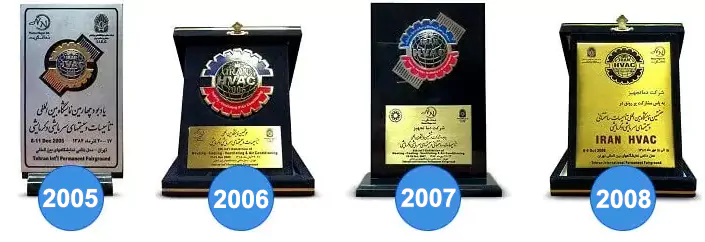
DamaTajhiz HVAC Participation at International HVAC and Construction Facilities Exhibitions Demonstrates its Global Reach and Commitment to the Industry.
We Look Forward to Your Call and the Opportunity to Meet With You
SHARE THIS CONTENT TO SPREAD THE KNOWLEDGE
| |
Head Office: No. 463,Talebian Alley,Taleghani St.Tehran,Iran


DamaTajhiz has provided the opportunity to sell and ship specialized HVAC equipment for applicants in the following countries as the first and the most popular online store for selling HVAC equipment (Heating , Ventilation , Cooling , Air conditioning) in the Middle East : Afghanistan – Tajikistan - Uzbekistan – Turkmenistan – Azerbaijan – Armenia – Georgia – Turkey – Iraq – Syria – Jordan – Kuwait – Emirates – Qatar – Oman.
